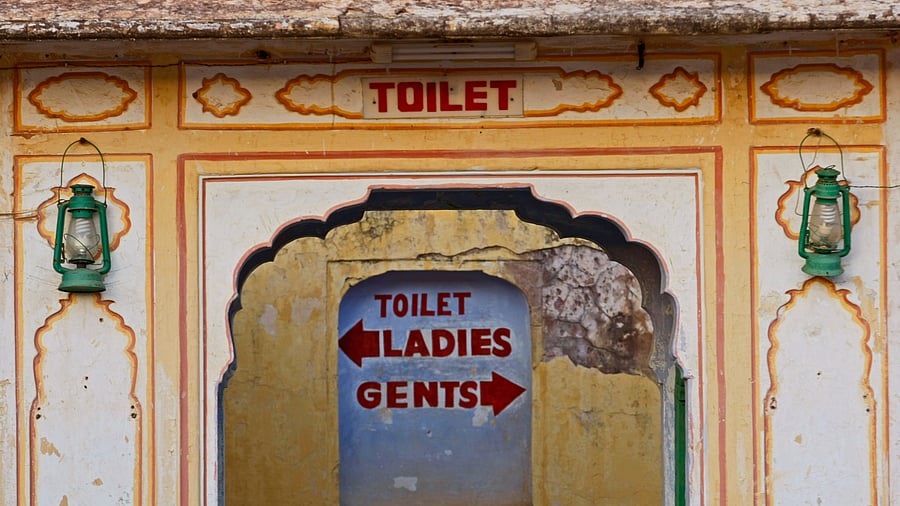
Image for representation.
Credit: iStock Photo
Himachal Pradesh has demonstrated that determined efforts can lead to remarkable improvements in living standards. Its Human Development Index (HDI) ranks second in India; behind Kerala. Despite its sparse population, Himachal Pradesh achieved full electrification in the mid-1980s, and successive governments have supported social infrastructure in health, education, and tourism.
Since 90% of the population resides in villages, and over 80% of settlements have fewer than 200 residents, becoming open-defecation-free has been a significant milestone. Approximately 99.83% of households have access to and use toilets — 97.19% have toilets within their homes, while 2.36% rely on shared facilities.
However, a more pressing challenge has now emerged: waste treatment. Without clear policy interventions and concrete action, Himachal Pradesh risks a sanitation crisis, as accumulated faecal sludge at household and community levels could pose severe health hazards. Reports indicate that several conventional water sources have been contaminated due to improper sludge disposal.
Reality of sanitation infrastructure
Himachal Pradesh is home to 7.5 million people, 90% of whom live in rural areas. Around 7% of the rural population is concentrated in 541 villages surrounding 69 urban centres, where 475,962 people live in 105,657 households. These areas are evolving into business hubs for rural communities and attracting increasing numbers of tourists, thus intensifying the need for improved sanitation infrastructure.
Over 700,000 workers are engaged in hospitality, road construction, hydropower, and real estate, all which require adequate sanitation facilities. Approximately 45 million tourists visit Himachal Pradesh annually, and this influx exerts immense pressure on the state's sanitation infrastructure. With tourist numbers expected to rise, strengthening and maintaining sanitation systems is essential for sustainability.
Rural toilet landscape
As of February 17, Himachal Pradesh has 1.428 million toilets, according to the SBM(G) MIS data. Notably, 93% of these are single-pit toilets, where water seeps away, leaving behind faecal sludge that accumulates over time. Around 5% of toilets use septic tanks — watertight containers allowing partial settling of faecal solids before the effluent is discharged into drains or soak pits. Both types require regular emptying and safe disposal of accumulated sludge. Additionally, the state has 3,140 community toilets catering to both villagers and tourists.
A survey, conducted (by the Rural Development and WASH Institute) in August and September, which covered 50,240 households across 2,396 villages, found that about 67% of households discharge their waste either into open areas or through unscientific disposal methods — posing a major challenge for the state.
Desludging, a top priority
With 97% of households using single-pit toilets, a cost-effective solution is to promote twin-pit systems, which could resolve much of the problem. However, for septic tanks and holding tanks, desludging must be prioritised under a proper regulatory framework. Current desludging trends indicate a lack of awareness and regulation, where about 61.37% of households have never desludged their toilets.
Alarmingly, nearly 70% of waste from private desludging services (which are used by 83% of toilet users) is dumped into water systems or open drains, creating a severe health hazard.
The way forward
The survey underscores the urgency of corrective measures. Immediate actions must include promoting twin-pit toilets, strengthening mapping and monitoring of waste treatment practises, regulating private service providers to ensure proper waste disposal protocols, and, developing a treatment network.
It is vital to encourage community ownership and engagement. By illustrating the direct connection between improved sanitation and health, people can be motivated to adopt these systems for their safety and well-being.
Himachal Pradesh has made impressive strides in sanitation, but without urgent intervention in faecal sludge management, the progress achieved so far could be undermined. The next phase of the sanitation drive must focus on waste treatment and responsible disposal, ensuring that development does not come at the cost of public health and environmental sustainability.
Tikender Singh Panwar, former deputy mayor of Shimla, is member, Kerala Urban Commission. O P Bhuraita is a geographer working with WASH institute.
Disclaimer: The views expressed here are the authors' own. They do not necessarily reflect the views of DH.